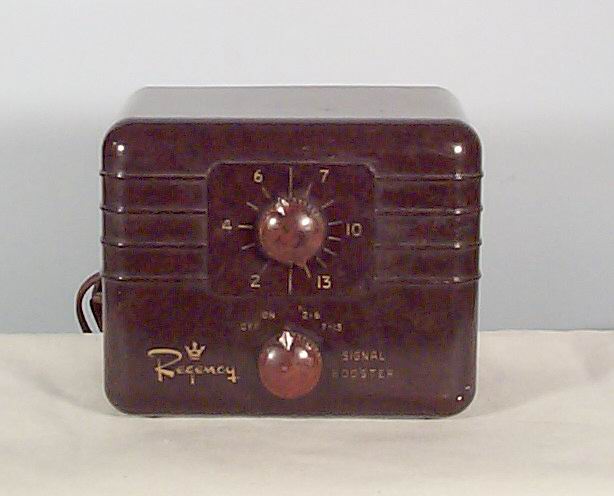Regency db-400


I.D.E.A. of Indianapolis Indiana, began making the db-400 booster in about 1949. This was their second TV booster, and their first bakelite-cabinet model, and the styling and basic design lasted for a couple years (a long time in the short history of TV boosters). It, and its successor, the db-410, were heavily marketed in the TV industry trade press. I.D.E.A. marketed their products under the Regency brand name.
The circuit consists of two identical 6J6-based amplifiers, one each for the high and low channel groups. Four coils are tuned by moving powdered-iron cores in and out (permeability tuning) by rotating the single tuning knob. A switch selects the circuit needed, and turns the unit on or off. The "ON" position turned on the booster's tubes' filaments but passed the antenna signal straight through to the TV set -- in effect, a "standby" position. The ubiquitous selenium rectifier made the plate voltage, through a small transformer.
The cabinet is standard brown bakelite, with plastic knobs. An ivory-painted version was also available (see my "Wanted!" page). The typical variations in the swirling of the brown bakelite made for a nice pattern, usually called "mahogany," though I have seen units that were so dark as to be nearly solid black.
Updated January 8, 2004